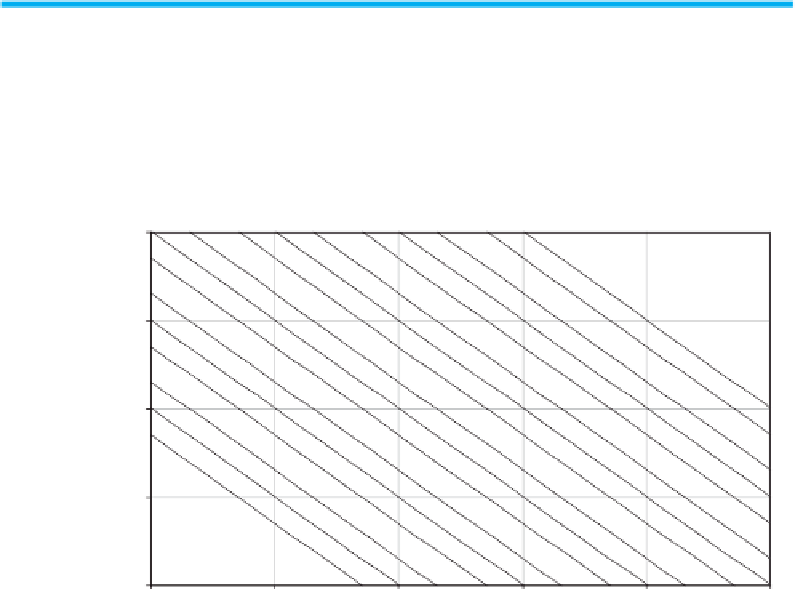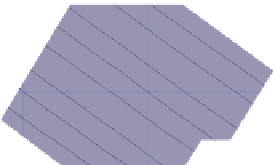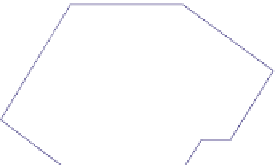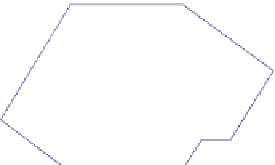Environmental Engineering Reference
In-Depth Information
many hundreds of metres of difference in elevation can sometimes carry more
energy than a large river that just has to descend from an elevation of a few
metres to reach the ocean. About a quarter of the energy of water from rivers and
lakes can theoretically be used. This equates to around 10% of the current primary
energy requirement worldwide. Ocean currents and waves also contain useable
energy.
9.2 Water Turbines
Water turbines form the core of water-powered systems and extract the energy from
water. Modern water turbines have very little in common with the rotating wheels
of traditional watermills. Depending on the head of the water and the water fl ow,
turbines optimized for the respective operating area are used (Figure 9.3). These
turbines reach a power of over 700 megawatts.
Figure 9.3
Operating areas for different water-powered turbines.
The Kaplan turbine, developed by the Austrian engineer Viktor Kaplan in 1912, is
usually the fi rst choice for low heads - for instance, for power plants on rivers
(Figure 9.4). This turbine uses the pressure of the water at the different elevations
of barrages. It has three to eight adjustable blades and looks like a large ship screw
(propeller) that powers the fl owing water. The effi ciency of Kaplan turbines reaches
values between 80 and 95%.
The bulb turbine (Figure 9.5) is similar to the Kaplan turbine, except that it has a
horizontal axle and, as a result, is suitable for even smaller heads. The generator is




















































































































